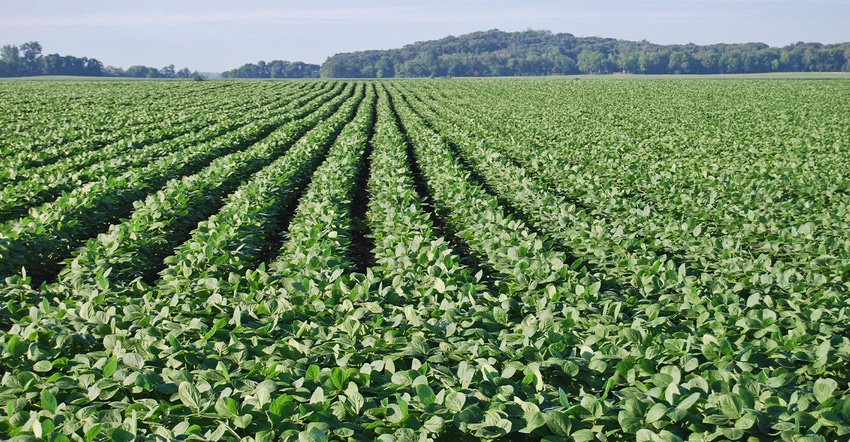October 10, 2019

Just over a year ago, Archer Daniels Midland and Cargill announced a joint venture called GrainBridge, an ag-tech company that creates software to offer farmers grain marketing decision support and the ability to market grain on a single platform. And while the relationship is about to celebrate a birthday, the GrainBridge name goes back a little farther.
“The software has been around for about a decade, and we’ve been operating out of Omaha, Neb., all that time,” says Faith Larson, chief strategy officer, GrainBridge. “It was founded by a farmer who had an operation in northeast Nebraska and still does.”
That farmer had also worked in other parts of agriculture, and saw the challenge farmers faced trying to understand true cost of production in order to do a better job marketing grain. This has long a challenge for farmers, who as price-takers in the market must be savvy about grabbing the best price possible for grain. The challenge is pulling together the information to determine true cost of production, and that became the aim of GrainBridge.
Larson says the company founder built the firm by bootstrapping it forward. “He capitalized it himself as a farmer with subscriptions and channel partners to build the farmer base,” she says. “Back then, there was no participation like there is today with the venture capital world, and they gained a lot of traction.”
With the ADM-Cargill joint venture, the two companies not only saw the value of the management tool, but also recognized that the real value proposition for the tool would to develop the ability to market grain in real time.
Not the first effort
Longtime followers of farm technology know that the road to online grain trading is littered with the empty wallets and broken promises of previous attempts. Larson says this time is different — in part because technology has come a long way since those early attempts.
She explains that the product is being rebuilt to provide a system that pulls together the right information to develop that profit-and-loss statement you can take to a lender. At the same time, the system will be able to help pinpoint the cost of production based on information the farmer enters.
The resulting new app is called STRATUM. Using farm-focused information, a user can place grain with buyers on the STRATUM system. Initially, those will be at ADM and Cargill elevators, but the firm hopes to expand that quickly.
In its first release in the first quarter of 2020, STRATUM will allow users to pull up location information for elevators, cash bids and basis levels, and access contracts available from companies that have signed up to use the platform. “Soon after, the grain buyer will be able to enter into a contract directly through the platform,” Larson says. “That won’t be available right away, but in the first release the user logs in and creates an account to get access. We have access to more than 400 grain-buying locations, and the number continues to grow.”
Later in the year, that full transactional functionality will occur. In that version, a farmer could see a good price on STRATUM — and even through a smartphone, move grain to a buyer, working out delivery logistics and more right from the platform.
Why buy in?
For farmers, the opportunity to have a system that can connect information from many sources into a single place for decision-making has value. Larson notes that in future versions, the system should be able to pull in yield, hybrid and input information from equipment services and other sources to help maximize that cost-per-bushel information.
“We’ll work with machinery companies to link the software to their systems to share information,” she says. Many agronomy-focused tech companies aren’t in the business of farm business management systems. GrainBridge is not an accounting program but will eventually be able to “speak” to those systems to capture necessary information to build reports for decision-making.
And while there’s “grain” in the name of the software, farmers can build profiles for different business segments to get a handle on cost of production, including livestock facilities. With that in place, as the system grows and updates, users can leverage information in new ways.
For grain traders, the ability to link directly to customers for smoother transactions should be enough of an enticement to be part of the system, Larson says. The transactional horsepower being offered gives any elevator improved access to customers and streamlines the transaction. While ADM and Cargill elevators are on board, the system is built to work with anyone.
“The idea is that the farmer has access to all grain buyers in his area through this system,” Larson says. “On the grain-buying side, they’re outsourcing the transaction software; it’s not their core business — they’re grain traders.”
STRATUM is the tool farmers will use to trade grain. For more information about GrainBridge LLC, visit grainbridge.com/stratum.
About the Author(s)
You May Also Like






